
JCC of Greater New Haven | Painting | Arts & Culture | Woodbridge
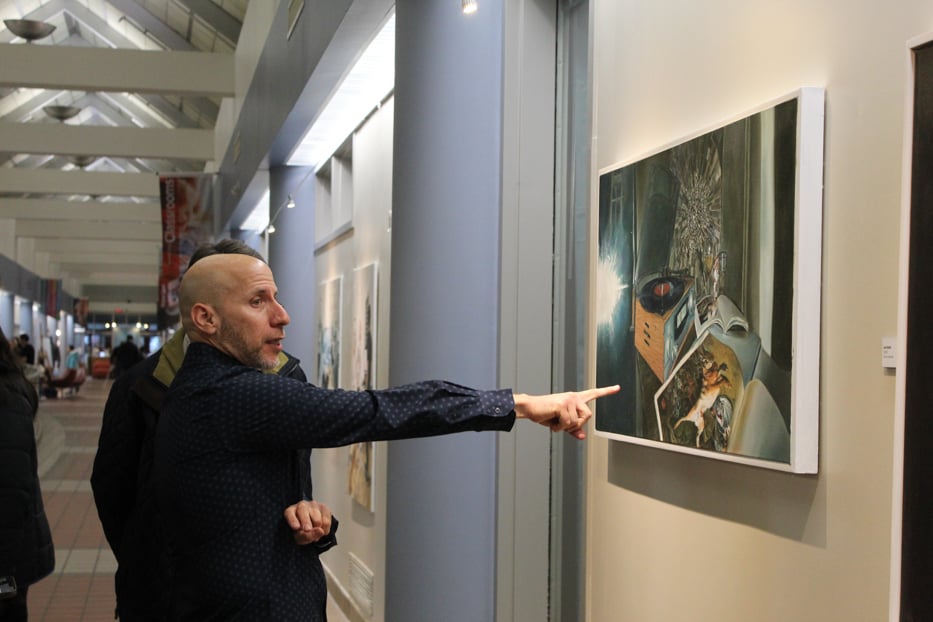 Doron Wolf with his painting Vanitas (2018). Photos Kapp Singer. All work by Doron Wolf.
Doron Wolf with his painting Vanitas (2018). Photos Kapp Singer. All work by Doron Wolf.
In Doron Wolf’s painting Alaska, two brown bears face a group of three tourists. One stands tall on its hind legs while the other ambles forward on all fours. Thankfully, for the tourists’ sake at least, the bears have long been dead—carefully taxidermied and placed in a faux mountain landscape behind a pane of glass at the American Museum of Natural History.
The piece is featured in My Family & Other Animals, a new solo exhibition of Wolf’s paintings at the Jewish Community Center (JCC) of Greater New Haven. Curated by the JCC’s Cultural Arts Programmer Susan Skalka, the show runs December 10 through January 29 in the Hoos Family Art Gallery, located at 360 Amity Rd. in Woodbridge.
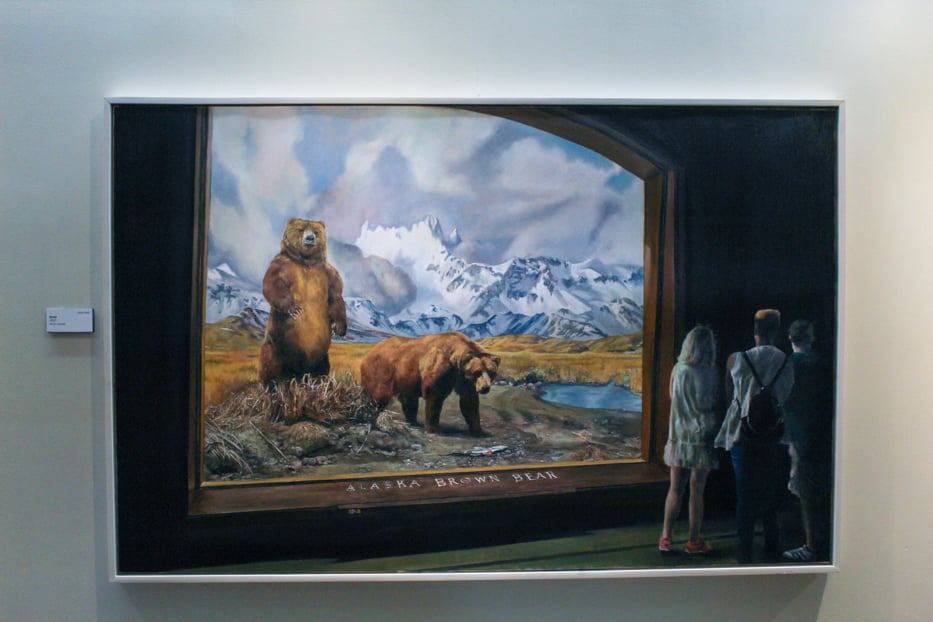 Alaska (2020)
Alaska (2020)
“Most of the way reality is perceived today is through mediating forces,” Wolf said in a short artist talk last Sunday. Broadly, Wolf’s work considers these mediating forces, often using animals as a substrate to highlight how humans experience the world at a remove.
Four of the eight oil paintings in the show focus on dioramas at the Museum of Natural History. Beyond the bears, there are bighorn sheep, bison, and a jackrabbit. Each piece looks on at the respective displays from a three-quarter angle, framing the animals and the museumgoers in an ominous, curious encounter. The shiny linoleum floor of the gallery is illuminated by faux clouds above the prairies or the crisp blue skies of the Rockies.
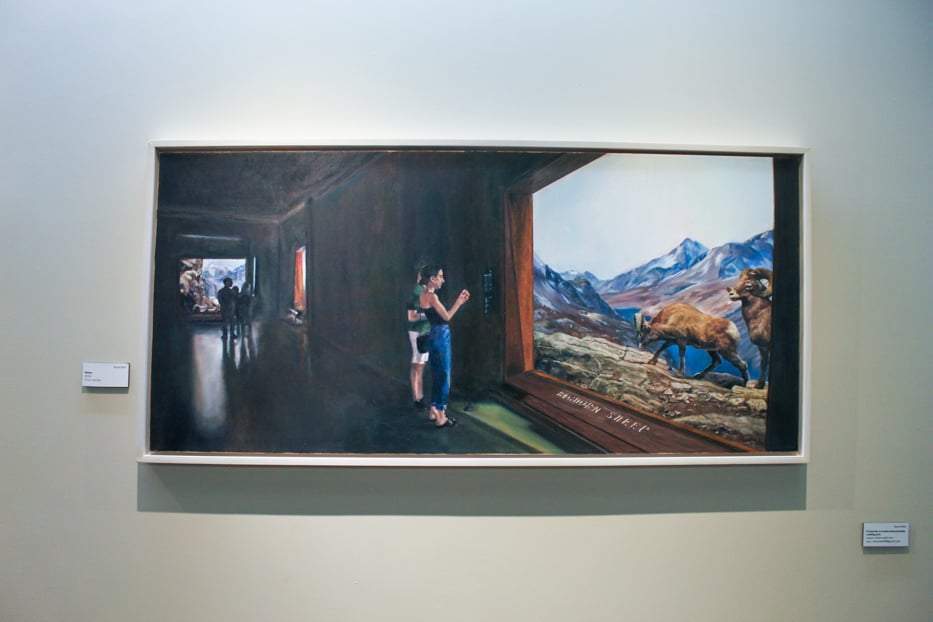 Nature (2020)
Nature (2020)
The uncanniness of the museum’s habitat dioramas is flattened through the artist’s painting technique. Stuffed bears and living humans, when taken up by Wolf’s brush, appear to be equally real—or fake. The spectators become as much an object of observation as the animals themselves, on display in the gallery hall.
His interest in habitat dioramas started after visiting the AMNH in 2018. “I was amazed by people looking at them as if they were nature,” Wolf said. “Even though they’re fake nature.” When he decided to begin painting these scenes the museum had closed due to the Covid-19 pandemic. Instead of working from life, the artist relied on digital tours of the dioramas, embracing yet another layer of mediation.
Wolf’s paintings take up a tradition of artists depicting habitat dioramas at the AMNH as a way to destabilize the divide between nature and culture. Hiroshi Sugimoto, for instance, photographed the museum’s dioramas so as to make them almost indistinguishable from real-life scenes. Richard Barnes’s series Animal Logic, on the other hand, pulls back the curtain on these assemblies, highlighting the maintenance practices required to keep them looking presentable.
Wolf’s paintings land somewhere between these two precedents, at once embracing the immersive quality of the exhibitions while simultaneously disclosing their utter artificiality.
“We are fortunate to have such a talented artist exhibiting in our gallery,” said Skalka. Wolf has shown his art widely across his home country of Israel, including at the Haifa Museum of Art, the Jezreel Valley Museum, and the Negev Museum of Art, among others. My Family & Other Animals is his third show in Connecticut after moving to the state from Haifa in 2021.
Apart from the dioramas, the exhibition includes several scenes from Wolf’s own domestic life. Perhaps the most intriguing of these works depicts Wolf and his husband standing in front of a computer in their home, two dogs lying at their feet. In the painting, the two men face each other, hands in their pockets and heads are turned towards the screen. It may not look like it, but they are getting married.
The title of the painting, Utah Marriage, refers to a practice that became popular during the Covid-19 pandemic in which Israeli couples wishing for civil marriages would be wedded by the state of Utah over Zoom. Because civil marriage is banned in Israel, Wolf explained, couples whose union would not be religiously permitted by a rabbinical court—gay or interfaith couples, for instance—or those who do not want to have an orthodox Jewish wedding, can get married abroad and the Israeli government will recognize it.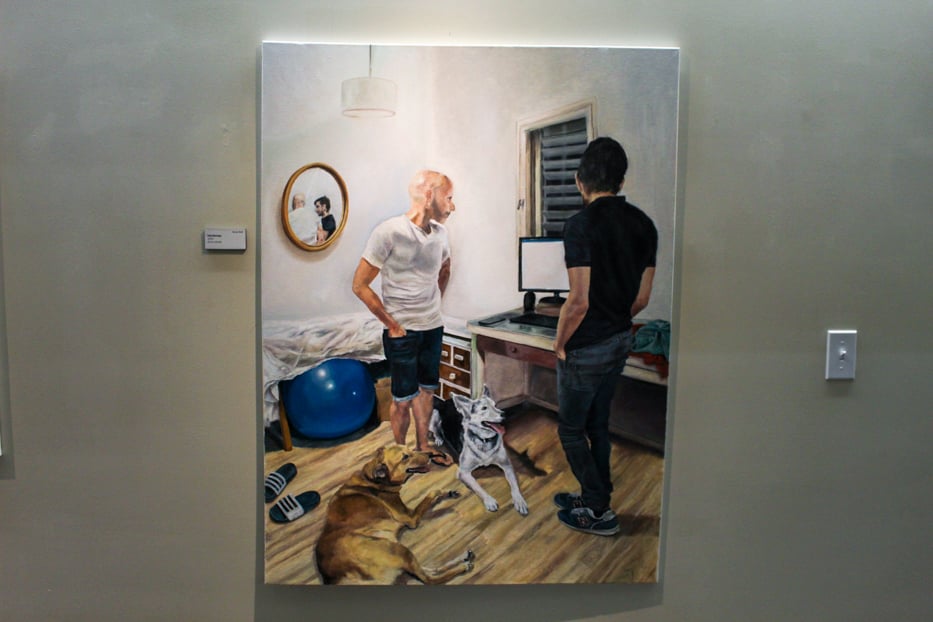 Utah Marriage (2023)
Utah Marriage (2023)
Due to lockdown measures, couples could not travel, so, taking advantage of a legal loophole, began conducting weddings virtually, many of which were administered by the state of Utah; in 2021, the Israeli Supreme Court ruled this was a legal practice.
The painting is an homage to Jan van Eyck’s 1434 The Arnolfini Portrait. Wolf cleverly reproduces the various ephemera scattered throughout the Flemish masterpiece, mirroring a small brown terrier with his two large hounds, a pair of elegant sandals with black and white Adidas slides, and an intricate chandelier with a simple, cylindrical light fixture. In fact, Wolf’s paintings throughout the show are densely filled with art-historical references: allusions to Velazquez, invocations of Dürer.
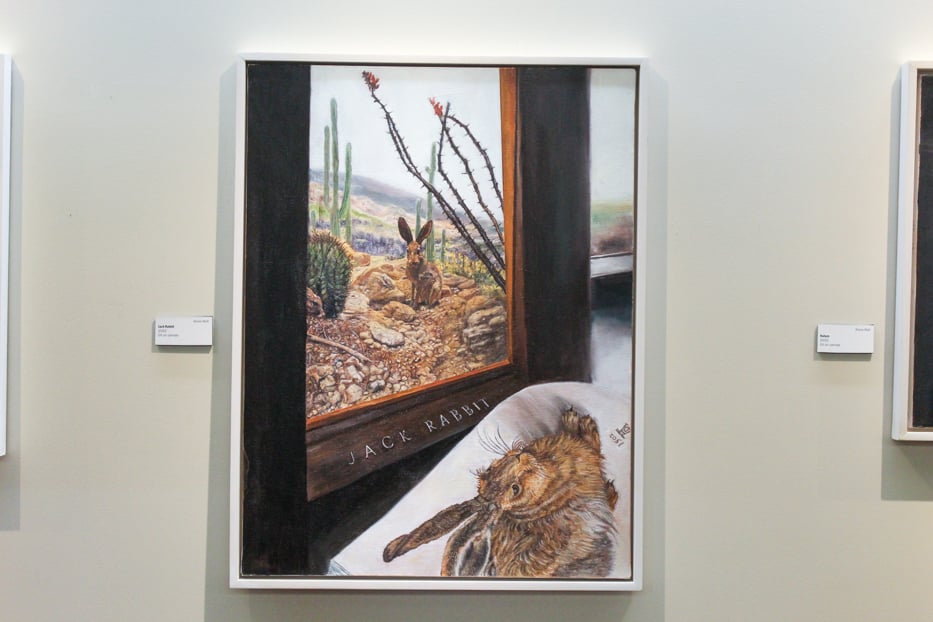 Jack Rabbit (2022)
Jack Rabbit (2022)
“When I was a child, I first started consuming art history through books,” said Wolf. In one of his scenes, a still life of objects in his home, entitled Vanitas, a large volume lies open in the foreground, displaying an image of Jan Wyck’s painting of a rabbit. In another work, one of Wolf’s AMNH dioramas, the symbol of the rabbit crops up again, this time through a Dürer painting, faithfully replicated down to even the signature AD monogram.
“I’m interested in quoting art history, and how art history is mediated,” Wolf said.
Following the artist talk, one visitor asked Wolf, “Do you have a favorite piece?”
“If I had a favorite,” Wolf responded, “Maybe I would stop painting.”

